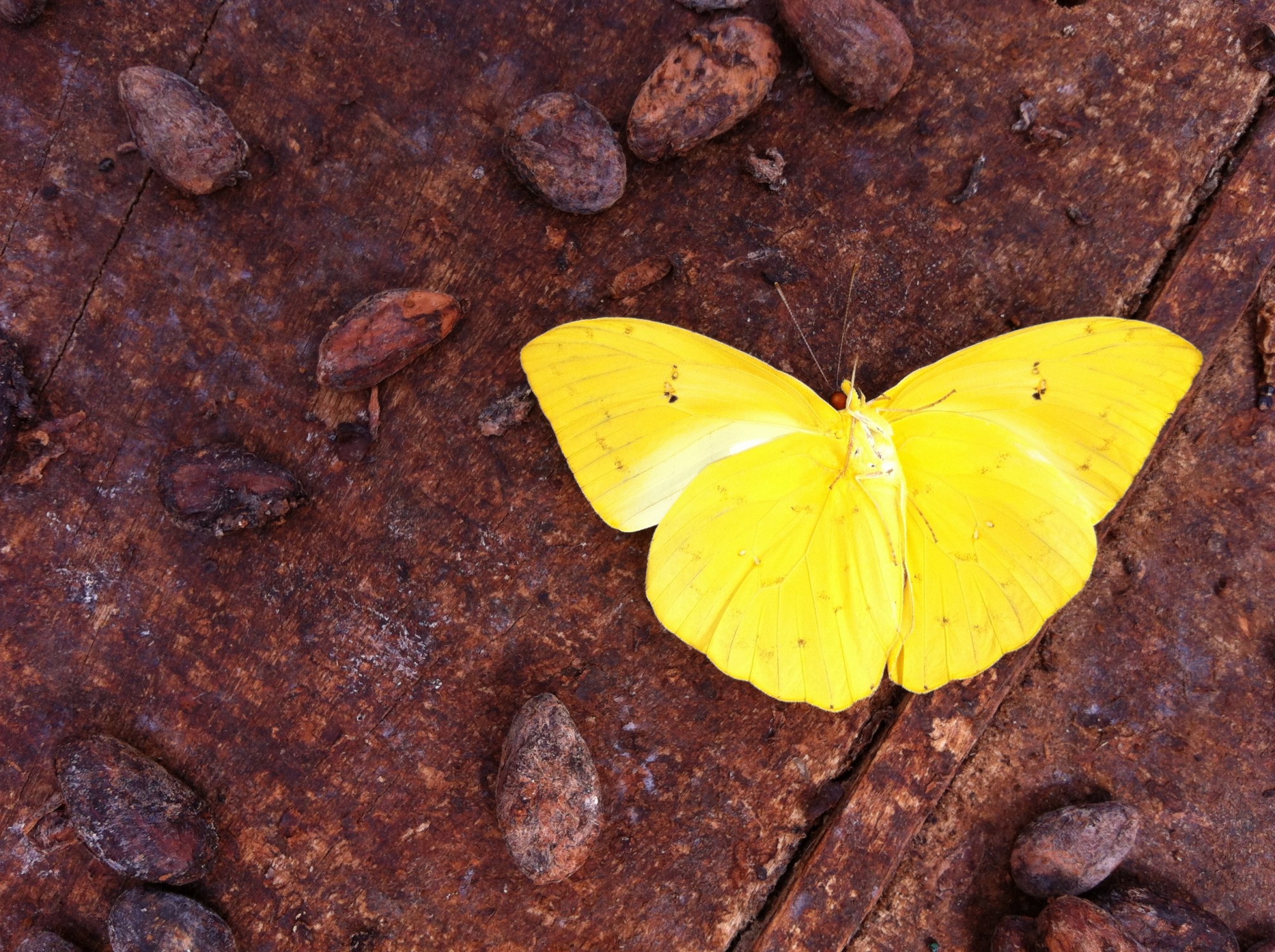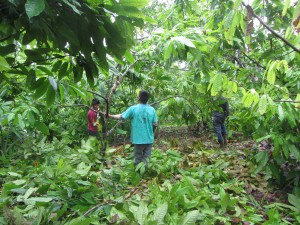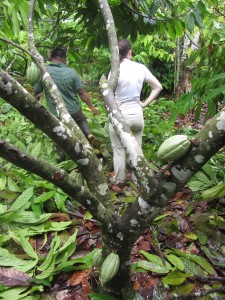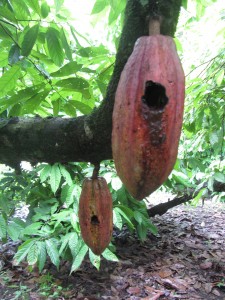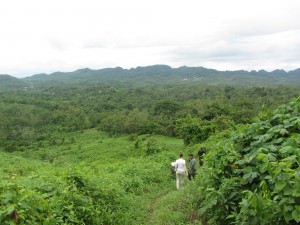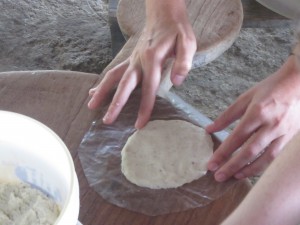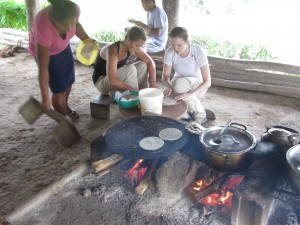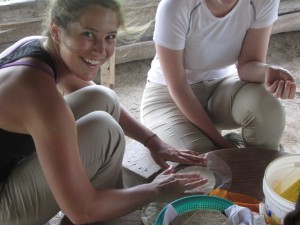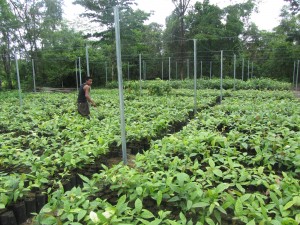I woke up with the sun as it broke through the ritual thunderstorm on Wednesday. It had been raining since about 11pm and now it was just after 5:00. We were getting an early start to catch the 6:00 bus out to the field to spend the day gaining a better understanding of the activities of the field team and have an opportunity to visit some farmers and their farms. It is about a half mile to the bus station and by the time we got there we were drenched. We arrived just in time to hear that we were luckily getting a ride and would not have to take the bus after all! (There was something pleasant though about walking in the rain through the empty streets of early morning. The water was calm and flat and the horizon had a distinct glow to it. I had an inkling to just sit on a dock and dangle my feet for a while. I was no longer sleepy or concerned about the dampness of my clothes.) And so our day began.
Piled into the cab of the pick up truck, we drove through the back country of Toledo. Bobbing and bouncing along the gravel/dirt roads (there is only one paved highway that passes through southern Belize), we stopped once to pick up a man and what I presumed to have been his son, hitchhiking with a giant bag of corn. They rode in the bed for about a mile to the nearby village of San Pedro Colombia where we dropped them at the women’s group corn mill. Here we also picked up Gabriel, the head of MMC’s field team, before we made it to our first farm. As we pulled off to the side of the road we were met by the pruning team of three and one of the farmer’s young sons. With machetes in tow (I got my own!), together we made our way into the jungle, crossing a stream and trudging through the mud. The hike was only about 30 minutes with a mild ascend towards the end, where at the top we found the farm and the cacao trees.
Despite the rain, the objective of the day was to prune about one acre of the three acre cacao farm to prepare the trees for upcoming season. Trees are pruned for control, if they grow too large and too tall they are much harder and more expensive to harvest. I also learned that another bonus of cacao agroforestry with additional fruit trees, is that the supplemental fruit trees attract birds away from the cacao pods. Without additional fruit trees, the birds would attack the cacao.
The weather had cleared some by the time we made our decent back to the truck. All piled back in we headed to Gabriel’s parents home for lunch. His father is a farmer as well and known as the “King of Cacao.” His support of Maya Mountain Cacao was integral to establishing the strong relationships the company has with its farmers. For lunch we enjoyed chicken, yucca, rice and beans, and fresh tortillas, which I’ll have you know I helped make!
Spoiled with good food, we finished our first day in the field by visiting another farm, meeting the farmer, and visiting the Ya’axche cacao seedling nursery.
